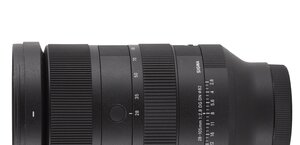Sigma 18-200 mm f/3.5-6.3 DC OS
1. Introduction
At the beginning of 2007 Sigma announced the launch of a new 18-200 mm zoom lens with the f/3.5-6.3 changeable aperture and, what’s important, with optical image stabilization.
The decision, although in a way expected, was also risky up to a point. 18-200 mm class superzooms belong to a typically amateur equipment class. Who might be interested in them? Certainly not the users of Sony and Pentax reflex cameras (although the lens is available with that mount too) because they benefit from image stabilization in-built so they see no point in paying big amount of money for a stabilized lens. For the Four Thirds system users the Sigma at 18 mm doesn’t give an angle sufficiently wide for a universal zoom. It leaves the users of Canons and Nikons as a potential target group. The problem is that the latter have a Nikkor 18-200 mm VR f/3.5-5.6, much-praised in many reviews. If the Sigma wants to compete successfully with that device it must be as optically good as the Nikkor and cheaper in the same time; after all it lacks a silent SWM motor for a start and is a bit slower at the longer end (recently, however, a piece of information has appeared on the Japanese Sigma site announcing without much publicity the launch of an HSM version prepared specially for Nikon cameras, undoubtedly making the cooperation with D40/D40x possible). We were even more surprised when in February 2007 Sigma announced that the lens’s suggested price on our market will amount to as much as 2490 PLN so just slightly less than the Nikkor’s.
Please Support UsIf you enjoy our reviews and articles, and you want us to continue our work please, support our website by donating through PayPal. The funds are going to be used for paying our editorial team, renting servers, and equipping our testing studio; only that way we will be able to continue providing you interesting content for free. |
- - - - - - - - - - - - - - - - - - - - - - - - - - - - - - - - - - - - - - - - - - - - - - - -
If, however, the Sigma doesn’t manage to outperform the Nikkor with its optical properties, its main target group will consist of only amateur photographers owning Canon reflex cameras. And here we run into another snag, connected with the Sigma’s autofocus, not always compatible with Canon bodies.
Just these several deliberations, quite unconnected with the tests, bode ill and could lead to a statement that the Sigma 18-200 mm won’t be a big success on the market. Such a conclusion is premature, though, because without performing serious tests we can’t assess any instrument. Courtesy of the K-Consult company we have been given a good opportunity to find out what the Sigma 18-200 mm OS is really good for.

The chart presented below shows the current situation on the market. We compare 18-200 mm lenses available in shops along with their apertures, construction, weight, dimensions, filter thread sizes and prices.
| Company |
|
|
|
|
|
| Model |
|
|
|
|
|
| Aperture |
|
|
|
|
|
| Construction |
12 groups |
13 groups |
13 groups |
13 groups |
13 groups |
| Weight |
|
|
|
|
|
| Dimensions |
|
|
|
|
|
| Price |
|
|
|
|
|
Information about our review method can be read in our article “How do we test lenses?"







